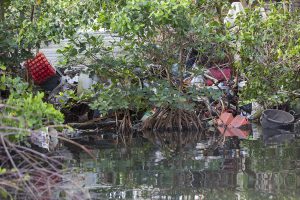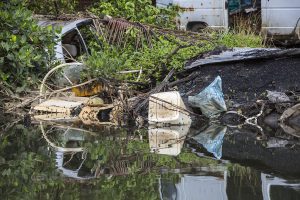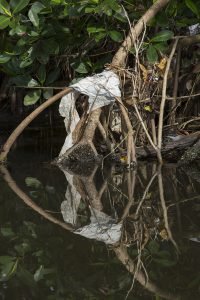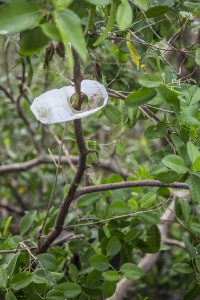“There was the Guadeloupe before, and after this experiment in the mangrove”, says Serge Pittet, CEO of the Foundation. Whilst it had been over a week since the teams from Race for Water had been criss-crossing the island in order to try to understand the problem of plastic pollution, the conclusions were supposedly rather positive: no massive piles of rubbish on the beaches, a few abandoned bin bags but not really any sign of fly-tipping. Everyone seemed to be breathing a sigh of relief. “You haven’t been to the right places,” retorts Julien, a fishing guide on the island. For several years, the young man has been bringing his fishing-fanatic clients into the mangrove with a ‘no-kill’ policy, a technique aimed at immediately releasing the fish after catching it. “If you like, I can call round to collect you at dawn on Monday morning to show you the reality”.
At 6:30am on the dot, Serge and Peter, the Foundation’s media man, climb aboard Julien’s little flat-bottomed boat. Initially running parallel to the refinery in Point-à-Pitre, it’s amidst a setting of vast tanks marked ‘heavy fuel’ and ‘residue’ that the explorers slowly make headway. In the distance, they can make out a beach, covered in macro-waste. “The ambient air smelt of hydrogen sulfide (H2S), but it would have been necessary to analyse the water and the sand”, explains Serge. According to Julien, this odour was due to the decaying green algae, a remnant from the recent passage of Hurricane Maria.
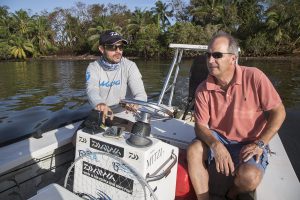
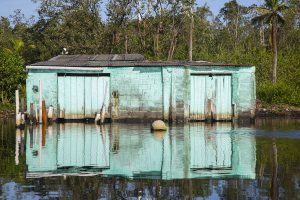
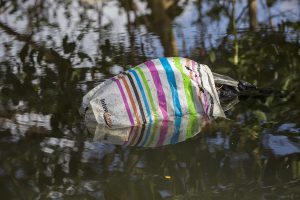
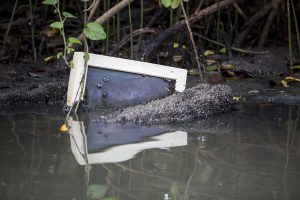
Heading deeper into the mangrove, Julien then takes them along a branch of the Rivière Salée (Salt River), which the fishermen have nicknamed “rivière caca” (poo river). “We were making our way along the dump at La Gabarre, which we guessed had a massive mound of ochre red earth behind it,” says Serge. “From a distance, the water just looked a little brownish. As we got closer, we discovered a large quantity of plastic waste of all kinds, abandoned cars, TV screens stuck in the sludge and even a dead animal”. For the first time since they’d arrived in Guadeloupe, the Race for Water teams discovered a fly-tipping site. According to certain sources, the latter has been around for many years and, though selective sorting of waste is now compulsory on the island, through ease perhaps some people are still disposing of their waste in the river. “Clearly, it’s important to continue raising awareness among the local inhabitants, explaining to them about the toxicity of plastic waste and helping them to take action. These findings repeated throughout this tour of the islands give meaning to the actions carried out by the Foundation,” says Peter.
